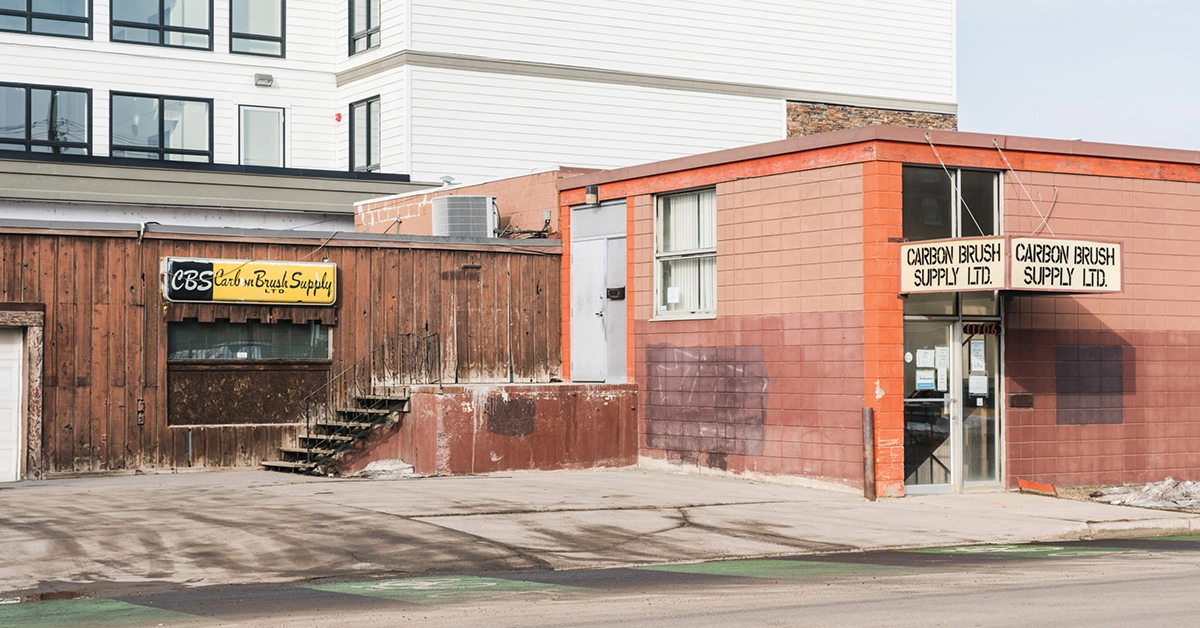The position of city centre paramedic is relatively new. It was invented three years ago as part of Alberta Health Services’ Emergency Medical Services (EMS) Community Care team, a specialized group created to work on complex-care cases within the city. The team is made up of carefully selected nurse practitioners and paramedics.
Amy Benson was the first city centre community paramedic. In addition to her experience as an EMS paramedic, she has also volunteered overseas as medical aid following natural disasters in places such as Haiti.
She explains the inception of the EMS Community Care team. “We found that there was a large call volume to agencies like Boyle Street, and that took a lot of resources. When we looked at the patient outcomes, we weren’t really hitting what they needed with giving them emergency resources,” she says. “And we recognized that lots of emergency systems don’t really speak to the trauma-informed care, the harm reduction, the sensitivity that a lot of the patients that are in such a vulnerable space require.”
Edmonton’s core was just one of the communities that required a more diverse and innovative approach. This meant rethinking and reconfiguring some of the roles of paramedics and nurses within the health-care system. Part of that was to have health-care professionals working within the community, as opposed to transporting all patients to the hospital.
Last year, legislation finally caught up to the changes that health-care professionals have known were needed for quite some time. The revision of the Health Professions Act in late 2017 will play a key role in elevating Alberta’s health-care system, specifically through the changes that have been made to the role of paramedics.
“Under previous legislation, a paramedic functioned under a physician’s license, so we have medical directors that are responsible for every paramedic in the city. It’s a team of about five physicians who collaboratively oversee the entirety of Edmonton’s paramedics, which are 500+ members. And so you can only think how risk averse those physicians have to be when you have that many practitioners using your oversight and your license to go out and treat medical problems,” explains Benson.
But now paramedics will operate under their own licenses and will have their own liability insurance. While there are still parameters and procedures that must be followed, this gives paramedics more freedom to use their skills more efficiently.
Benson says that Alberta Health is “realizing that paramedics have the knowledge, and the skill, and the medical training to be able to speak to a greater need.”
“If I know how to draw blood, and I know what the process is, and the procedure is, and I function within that, then that will be a skill that I am allowed to use and function within. As long as you are functioning within your skill and your knowledge, you are more than welcome to use those skills that you were trained in. It just allows us to offer more to people.”
Previously, every person that received treatment from an ambulance was required to be transported to a hospital. Benson says that astronomical wait times and limited space at hospitals have been factors in the innovative approach that is being developed in line with the legislation.
The new legislation allows paramedics room to use their medical knowledge and judgment. If they arrive on the scene and an individual’s health-care needs would be better suited to a medicentre visit, they are now allowed to transport them there instead of a hospital.
Benson explains that not every situation requires, or is even best treated at, a hospital. She explains that many of the calls she received while working as the city centre community paramedic, could have been handled more efficiently and effectively by transporting the individual to a medicentre or by connecting them with a general physician. Benson says that her role had to be very wide, in that she wasn’t only a paramedic responding to emergency calls, but was also responding to mental health and social problems.
”It’s all about just trying to navigate the system to a more appropriate resource,” explains Benson.
She says that, in her opinion, safe injection sites are a resource that will help to streamline the health-care system and reduce ER wait times, particularly in the downtown community.
Benson believes one of the reasons there has been resistance to the implementation of safe injection sites is that often people “don’t want to see what is in our own backyard. We don’t like seeing somebody else’s pain and suffering and not being able to do something about it … we need to sit with them and listen, and hear what they need, and respond to them.”
She also says that many people still carry “the colonialized way of thinking,” when it comes to treating addiction.
“We think that by controlling we reduce the harm that’s done, and by putting all of these rules into place we reduce the harm that’s done. But what data is actually showing us, and what the larger studies have actually shown us, is that if we are kind and gentle as health-care professionals, we now become approachable.”
Benson believes that the new approaches and legislation will help the health-care professionals currently working within these communities to tackle the widespread issues more effectively. She explains that often in emergent care situations, substance users are put through detox — which in many cases is needed and fixes the immediate harm of overdose or substance use — but then do not have access to follow-up supports in a way that fits their needs, particularly as they pertain to long-term mental health.
“If we take away that numbing, then all they have left are the ghosts. And those ghosts are what they are trying to disappear from. So now, if I’m responsible for taking all of their numbing solution off, I become responsible for the ghosts, or to help process the ghosts, or heal the ghosts. And that’s the piece that we’re lacking. We don’t acknowledge that there is a massive need for mental health supports.”
However, Benson says that in her experience within the community, the needs of the city centre community are not solely health care related. Often the focus is on the downtown homeless community as opposed to the community as a whole.
She explains, “I don’t blame the neighborhoods around for not feeling safe. There’s a reason for that. While we like to focus on the needs of these populations, they also cause harm because of their coping mechanisms and their survival techniques. And I’m not blaming them at all for that, I just think we need to be gentle.”
While she can empathize with the sentiments of people who grow weary of some of these survival techniques — Benson herself had property vandalized and was stolen from while living downtown — she reminds people, “Just be gentle. Everyone is fighting their own battle.”
Part of the reason Benson was so successful in her position, was the way she approached her role as the city centre community paramedic. She believed it was imperative to change the way that people in her community perceive individuals in uniform, especially when past experiences may have been negative. She understood that this change would be gradual, and so she worked to meet people’s needs — be they health-care needs or otherwise — from a perspective of listening and understanding before acting.
“I took on a mentality — I’d like to say in my life — a couple years ago. I come in with: ‘I’m here.’ Instead of coming in with a decision made, or having already determined what I’m going to do and how I’m going to do it, I’m just going to come in and be there, and listen. If I hear something that I can do something about, then I’m going to do it. And if I don’t, then I’ll go find somebody who can,” explains Benson.
Benson also believes that one of her hobbies helped shape the way that she approached her job as the city centre community paramedic. She says that working with her horse was beneficial for the way that she learned to care for people and patients.
“I would go out and be working with my horse, and I would be frustrated or I would be burnt out, and he was reading that, and he wouldn’t respond or he wouldn’t listen. But then as soon as I was gentle and kind, he gives. And then I would go and apply that to how I (worked) with my people, and all of a sudden, it would give,” she explains.
Benson says that the collaboration of many individuals on the EMS Community Care team is vital to their success, not only in the city centre community, but in all of the projects and initiatives that they are currently involved in.
She believes that this type of collaborative and innovative approach will be instrumental in fixing some of the struggles that the health-care system currently faces.
“The way things are is not the way things will always be, especially if you have a really strong, powerful group of people who are willing to go the extra mile, to do the hard work, and truly believe in a mission.”
After three years as the city centre paramedic, Benson took a position in another city. The EMS community care team is still hard at work.
Photography by Matthew Jacula.





0 Comments